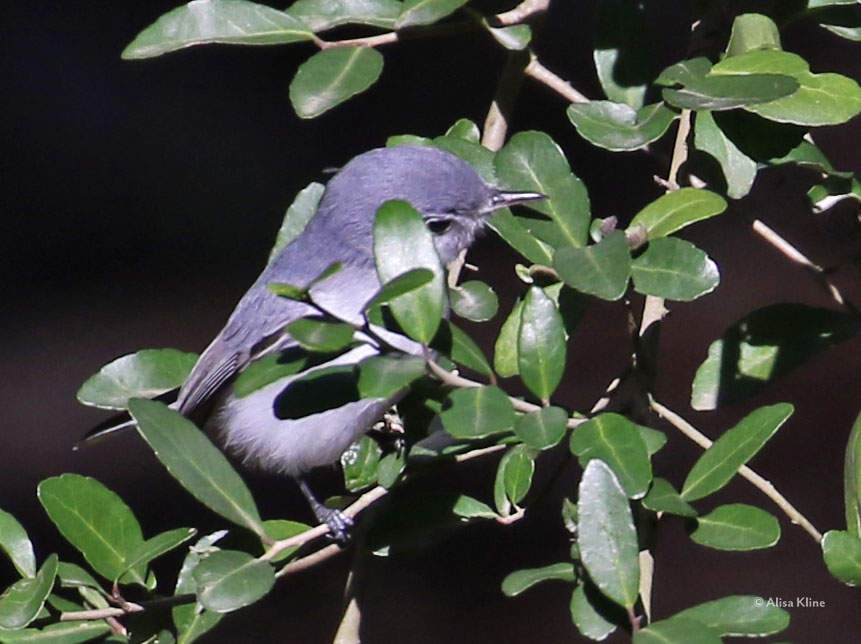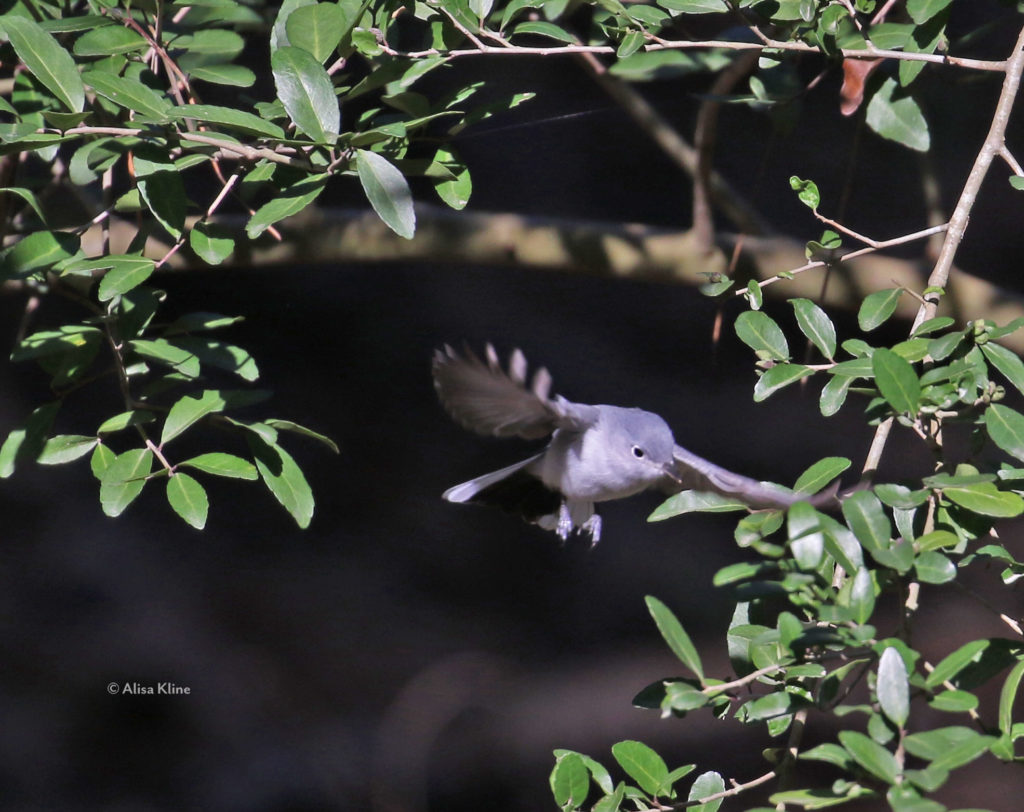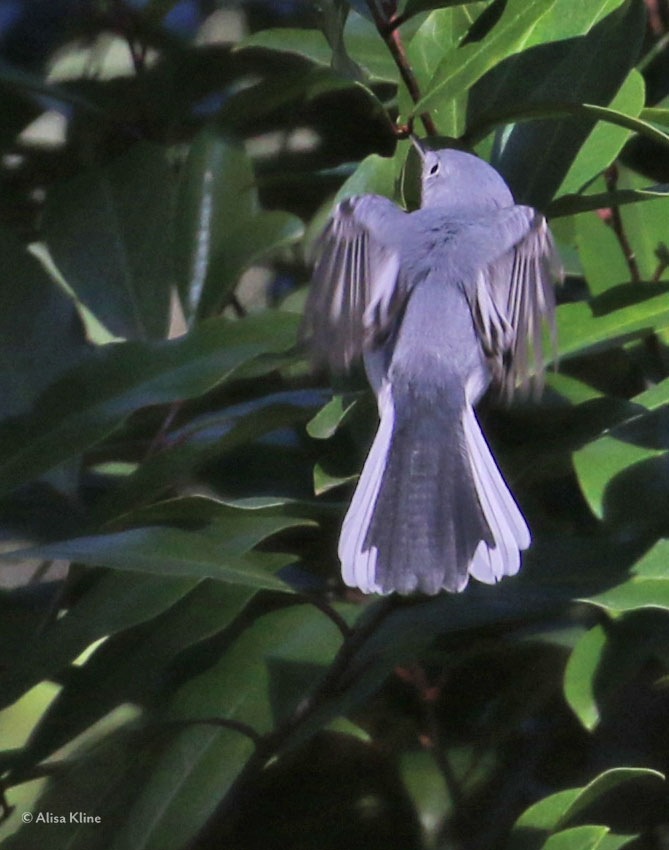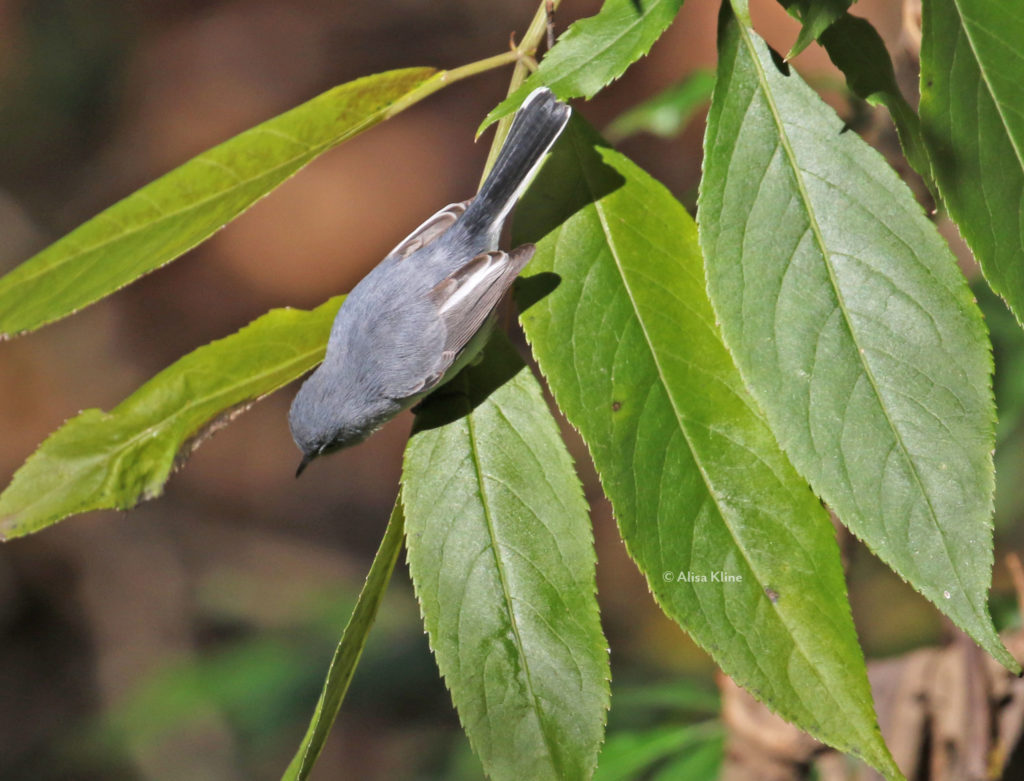Shrub detailing. Free of charge.

Sometimes your shrubbery can get, let’s not mince words, a bit buggy. The leaf suckers start to pile up. The mites get a bit mitey. Beetles are out-beetling you. You need help, but who do you call? Well, you call the gnatcatcher. That’s who!
If only.
We cannot summon birds to do yard work, although I must note that since I began keeping chickens, the snail population on the preserve has gone from OMG to, didn’t we used to have snails? I am crediting the hens, but for all I know, the snails are another casualty of extinction lite. Extinction lite is when it only applies to the preserve. for example, I know that spiny orb weavers (those adorable hard-shelled spiders that come in orange, yellow or white and have little spikey shells) aren’t extinct in the world, but on the preserve, where I once kept track of which color was predominating that year, they haven‘t been seen at all in many, many years.
But, back to gnatcatchers. They do catch gnats. They also catch practically every other small insect that might be on or near broad-leafed shrubbery. These are birds who are thoroughly fit for purpose. An engineer friend introduced me to that term recently, and I am in love with its value-free directness. If something is fit for purpose, it can be counted on to do the job for which it was designed. Well, gnatcatchers are designed to glean small insects off shrubbery and they are a marvel to watch at work.

The blue-gray gnatcatcher photographed for this post came in with a mixed flock on the Arboretum’s ravine trail. (A side note, this trail is great; it allows you to safely navigate the riparian ecosystem to which our Park belongs). I wrote about mixed flocks last week. And the gnatcatcher here used the mixed flock like public transport. A small flock of titmice, kinglets, chickades and a downy woodpecker flitteted in and when it left, the gnatcatcher stayed behind, hard at work on shrubbery across the bayou. The gnatcatcher stayed through two more mixed-flock visits and then took advantage of the third to catch a ride to another hot spot.
From the gnatcatcher’s point of view, the flock is like traveling with, if not armed guard, at least very twitchy and vocal guard. The mixed flock post has more detail.

A blue-gray gnatcatcher is a tiny bird. It weighs a fifth of what a house sparrow clocks in at. It looks bigger (about 2/3 the length of a house sparrow), but almost all that size is in its tail. A blue-gray gnatcatcher is 45% tail.
The bird makes amazing use of this enormous tail. For one thing, it stabilizes the gnatcatcher as it hovers close to leaves, snatching insects who try to hop or fly away. Gnatcatchers don’t hover like hummingbirds, which weigh a bit more than half of a gnatcatcher. Their wings don’t beat so fast as to become nearly invisible the way hummingbirds do. They just get kind of blurry, and the tail will fan out, flashing the striking white outer feathers.

This is the kind of fit for the purpose that I admire in this bird. I am always grateful for that striking tail plumage because gnatcatchers are unusual little birds and, at a distance without binoculars, can look like a bunch of other birds. It always takes me a few seconds trying to figure out what I’m seeing. Then that tail flashes and I know what I’ve got.
Would that all birds had a signal to tell me their names. But, in the same way, I cannot command gnatcatchers to come clean the shrubbery in the preserve, I also cannot command evolution to make birds that I can easily identify. I bemoan my insignificance. That helpful, flashy tail pattern is not there to make my life easier; it is there to make the gnatcatcher’s life easier. The flash of the tail startles insects. A startled insect is more likely to move. A moving insect is more likely to be seen.

Imagine how convenient this is for the gnatcatcher. There it is, searching for tiny insects to satisfy an insatiable hunger for tiny insects and every time it flicks its tail open, the tiny insects try to scurry to safety, thereby identifying their location for the hungry bird. I do not use the term fit for purpose lightly.

In addition to hovering and fluttering, gnatcatchers will act like warblers, hopping through branches. But unlike most warblers, they can’t help but take flight, to snatch a gnat, to get a better view, or just to flash that tail so amateur birders can confidently point and say, gnatcatcher.


